The NATO SEASPARROW Surface Missile System Project is a joint international military and industrial consortium with the distinction of being the largest and longest running cooperative smart defense initiative in NATO history.
The NATO SEASPARROW Surface Missile System Project is a joint international military and industrial consortium with the distinction of being the largest and longest running cooperative smart defense initiative in NATO history.
CONSORTIUM NATIONS






// ABOUT NATO SEASPARROW
Since its inception in 1968, the NATO SEASPARROW Project has had one pursuit – perfecting anti-ship missile defense capabilities through continued technology improvement. For fifty years, the NATO SEASPARROW Project has delivered on its mission to provide navies with an effective self-defense capability against some of their most serious threats.
// ABOUT NATO SEASPARROW
Since its inception in 1968, the NATO SEASPARROW Project has had one pursuit – perfecting anti-ship missile defense capabilities through continued technology improvement. For fifty years, the NATO SEASPARROW Project has delivered on its mission to provide navies with an effective self-defense capability against some of their most serious threats.
// THE VISIONN
A world where NATO and our Allies protect against threats across globe through military and industrial cooperation providing interoperable defense capabilities.
// THE VISION
A world where NATO and our Allies protect against threats across globe through military and industrial cooperation providing interoperable defense capabilities.
// THE MISSION
Provide a platform for international cooperation and innovation to manage the development, production, integration, and sustainment of effective, reliable, and affordable weapon systems to protect Consortium and partner nation forces from current and future threats.
// THE MISSION
Provide a platform for international cooperation and innovation to manage the development, production, integration, and sustainment of effective, reliable, and affordable weapon systems to protect Consortium and partner nation forces from current and future threats.
NATO SEASPARROW CONSORTIUM HISTORY
For 50 years, the NATO SEASPARROW Project has delivered on its mission to provide navies with an effective self-defense capability against some of their most serious threats. From ambitious beginnings, the project has grown to meet new and evolving threats, and to exemplify the concept of a Smart Defense initiative. The NATO SEASPARROW Project’s long history chronicles developments in technology, and partnerships between industry, government, and military that have made this the longest running cooperative weapons project.
In 1966, the United States approached NATO’s Conference of Naval Armaments Directors (CNAD) with a proposal for a shipboard self-defense system to counter the growing Anti-Ship Missile (ASM) threat. Later that same year, the NATO Naval Armaments Group (NNAG) established Project Group 2 (PG2) to evaluate the possibility of a cooperative program to develop an ASM defense system. PG2 consisted of Italy, France, Norway, and the U.S. Observers to PG2 included Germany, Denmark, and the Netherlands.
The study was ongoing when tragically, in October of 1967, the Israeli destroyer Eilat was sunk by an anti-ship missile. This proved to be the catalyst for NNAG approval of the PG2 recommendations to embark on the cooperative development of an ASM defense system built to improve the existing U.S.-developed AIM-7 Sparrow missile by modifying it to have folding wings and clipped fins.
Among the 15 NATO members at the time, leaders from four nations (Denmark, Italy, Norway and the U.S.) approached CNAD with a proposal to form a NATO project. Approval was granted, allowing the four nations to proceed. On 10 June 1968, the four founding members completed signature of the memorandum of understanding entitled, International Development of the NATO SEASPARROW Surface Missile System, which established a project that likely succeeded beyond what they imagined.
From ambitious beginnings, the NATO SEASPARROW Project has grown to meet new and evolving threats and to exemplify the concept of a smart defense initiative.
NATO SEASPARROW CONSORTIUM HISTORY
For 50 years, the NATO SEASPARROW Project has delivered on its mission to provide navies with an effective self-defense capability against some of their most serious threats. From ambitious beginnings, the project has grown to meet new and evolving threats, and to exemplify the concept of a Smart Defense initiative. The NATO SEASPARROW Project’s long history chronicles developments in technology, and partnerships between industry, government, and military that have made this the longest running cooperative weapons project.
In 1966, the United States approached NATO’s Conference of Naval Armaments Directors (CNAD) with a proposal for a shipboard self-defense system to counter the growing Anti-Ship Missile (ASM) threat. Later that same year, the NATO Naval Armaments Group (NNAG) established Project Group 2 (PG2) to evaluate the possibility of a cooperative program to develop an ASM defense system. PG2 consisted of Italy, France, Norway, and the U.S. Observers to PG2 included Germany, Denmark, and the Netherlands.
The study was ongoing when tragically, in October of 1967, the Israeli destroyer Eilat was sunk by an anti-ship missile. This proved to be the catalyst for NNAG approval of the PG2 recommendations to embark on the cooperative development of an ASM defense system built to improve the existing U.S.-developed AIM-7 Sparrow missile by modifying it to have folding wings and clipped fins.
Among the 15 NATO members at the time, leaders from four nations (Denmark, Italy, Norway and the U.S.) approached CNAD with a proposal to form a NATO project. Approval was granted, allowing the four nations to proceed. On 10 June 1968, the four founding members completed signature of the memorandum of understanding entitled, International Development of the NATO SEASPARROW Surface Missile System, which established a project that likely succeeded beyond what they imagined.
From ambitious beginnings, the NATO SEASPARROW Project has grown to meet new and evolving threats and to exemplify the concept of a smart defense initiative.
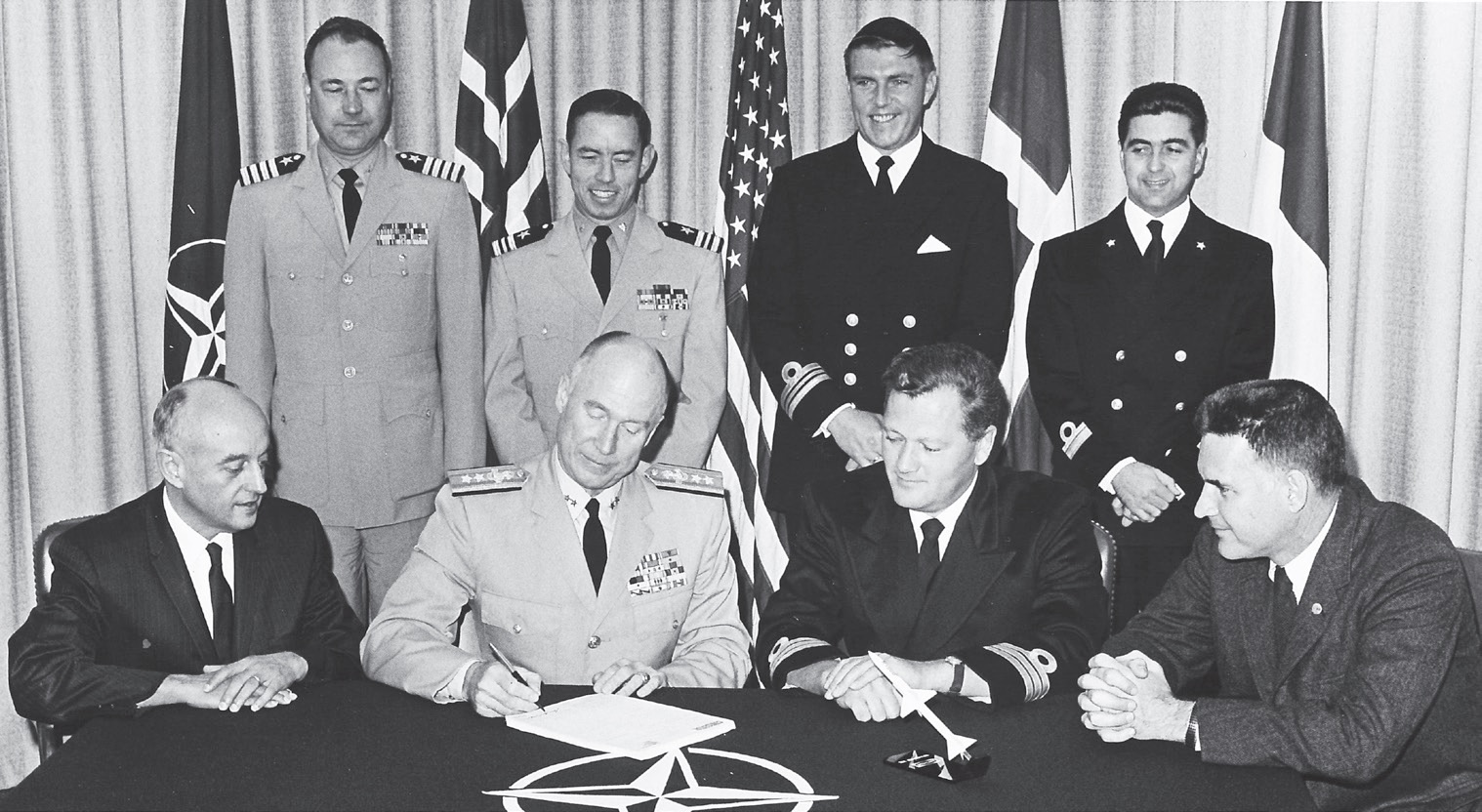
October 1969 – Signing the $23 million NATO SEASPARROW contract is Rear Admiral Mark W. Woods, Commander, Naval Ordnance Systems Command. Seated are (l to r): A. Abate, Raytheon; RDML Woods; CDR F. Tønnessen, RNN; Dr. J. F. Shea, Raytheon. Standing are (L to R): CAPT S. T. Counts, USN, NATO SEASPARROW Project Manager; LCDR P. I. Bledsoe, USN; LCDR F. Andersen, RDN; LT A. Pescatori, IN.
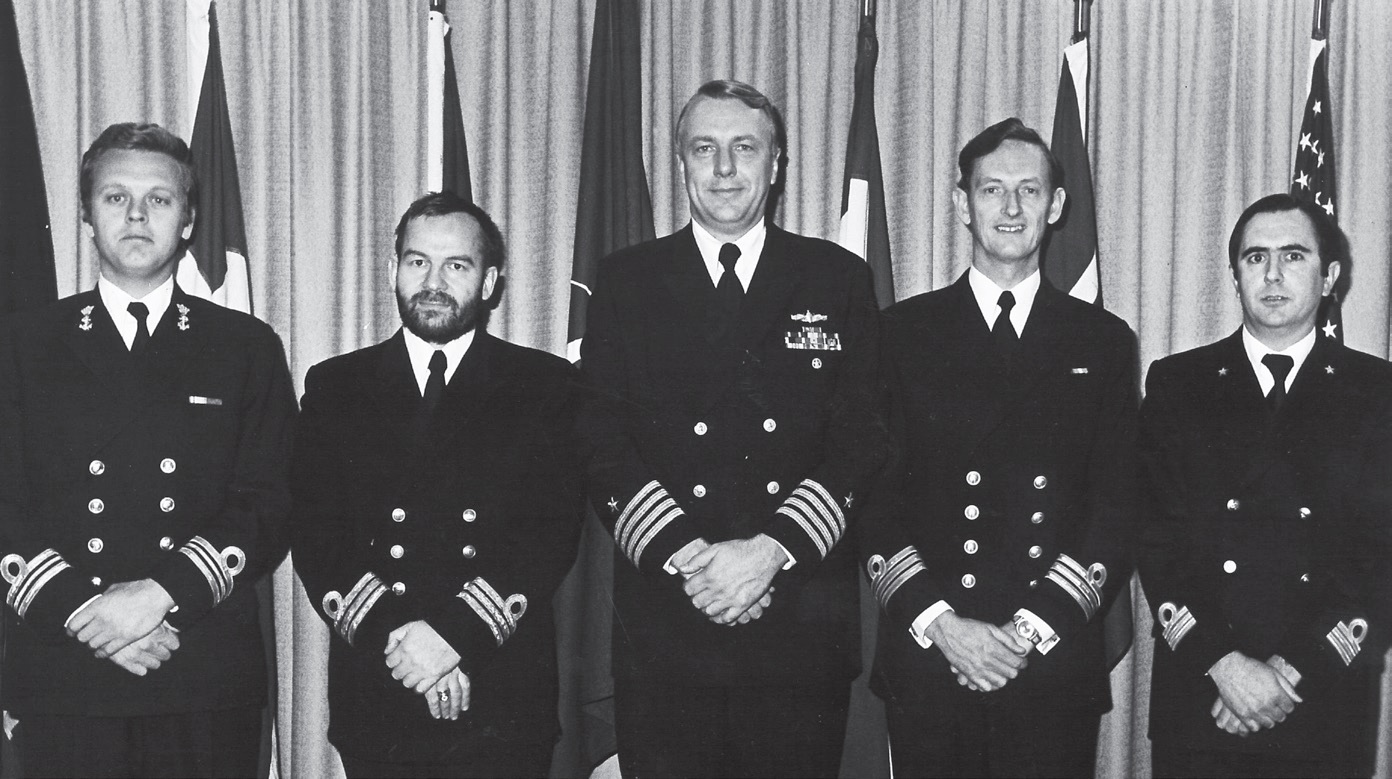
10 July 1968 – 1st NATO SEASPARROW Project Steering Committee (NSPSC) Meeting – Washington, DC.
WHO WE ARE
WHO WE ARE
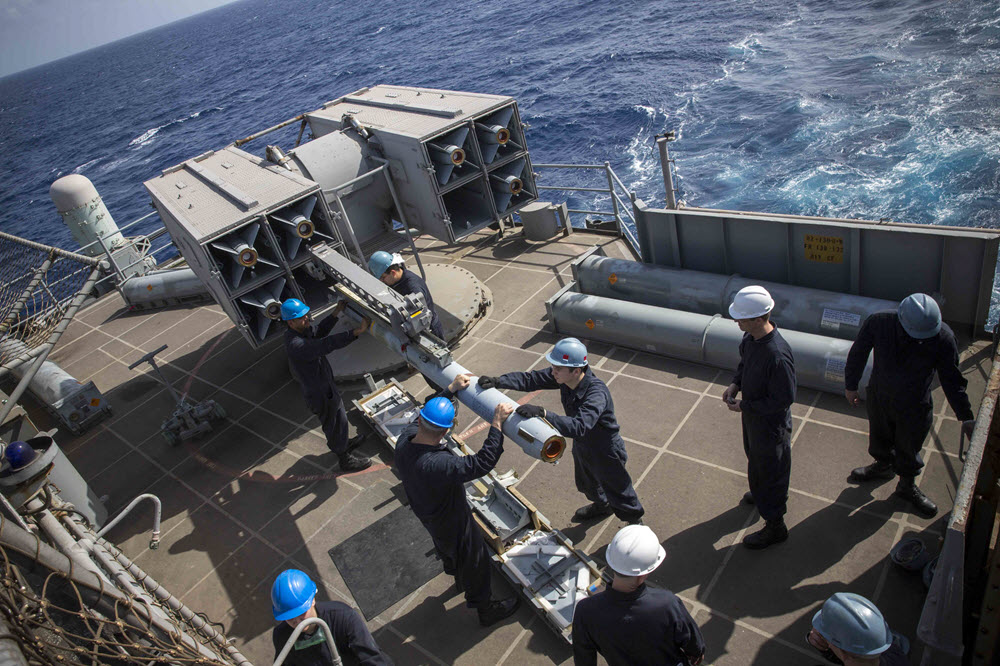
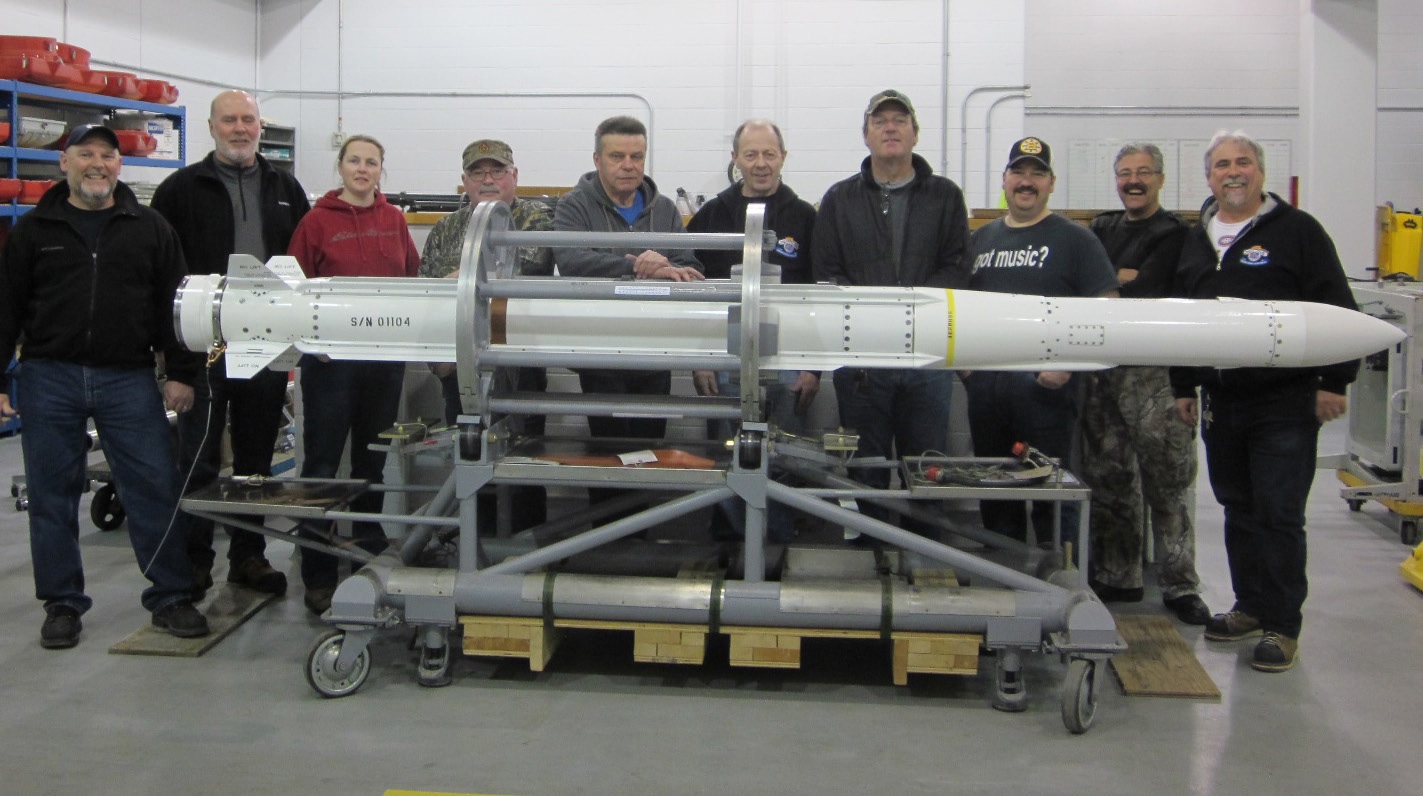
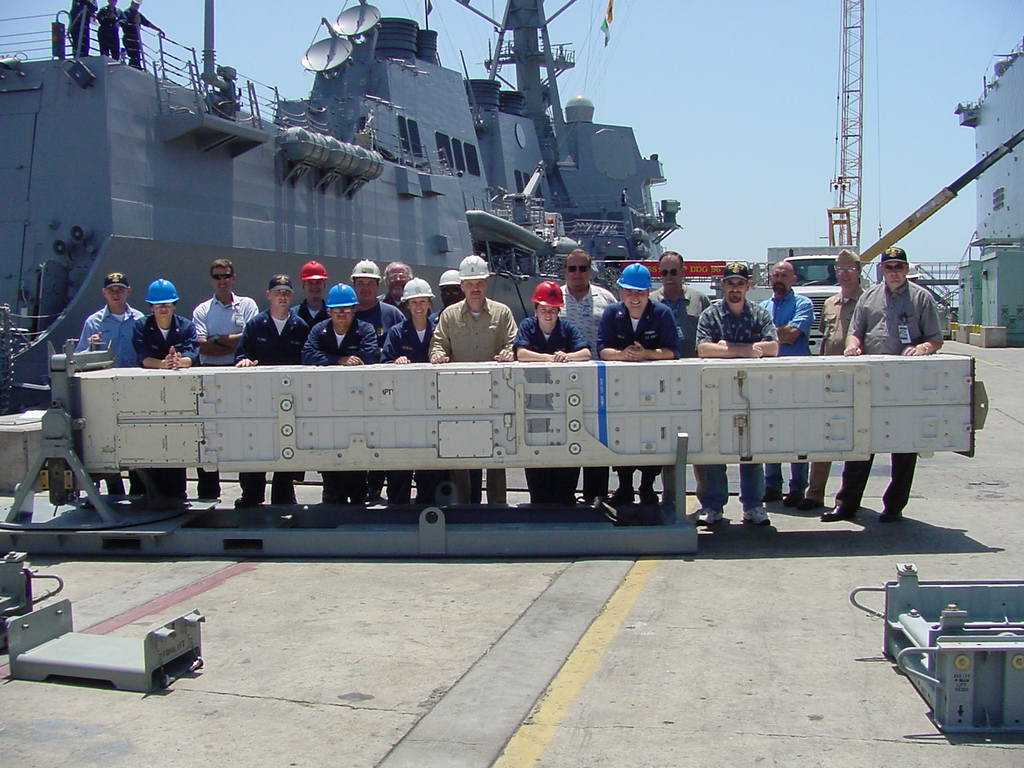
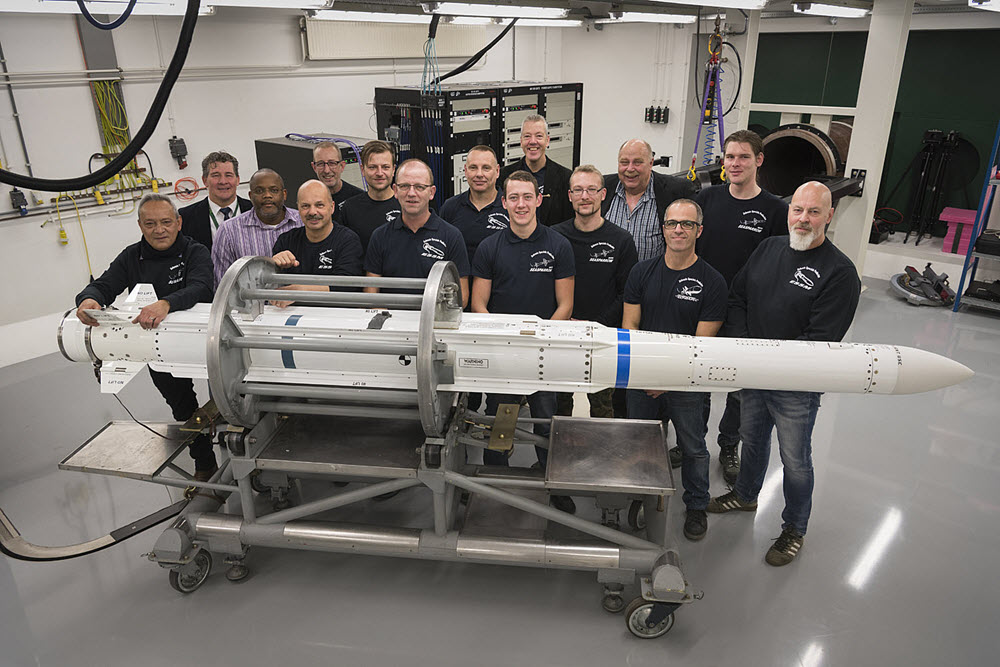
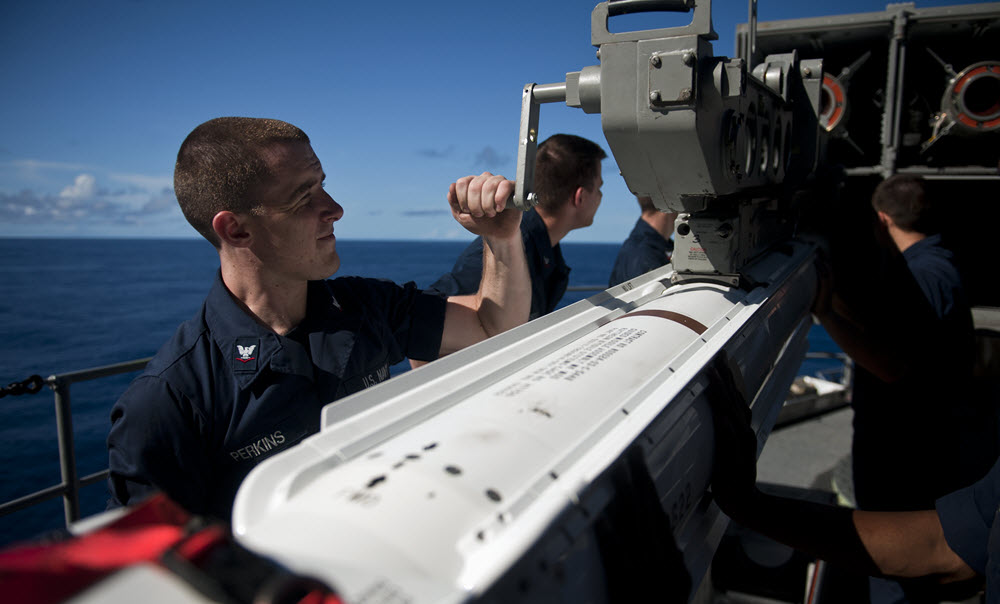
PROJECT NEWS
PROJECT NEWS
NATO SEASPARROW Project Conducts Successful Flight Test of ESSM BLOCK 2
POINT MUGU, Calif. – The NATO SEASPARROW Project Office recently conducted a successful flight test of the Evolved SEASPARROW Missile (ESSM) Block 2, intercepting a BQM-74E aerial target, the U.S. Navy announced, July 5.
The test is the first ESSM flight test to utilize the new Block 2 active guidance seeker-head. ESSM Block 2 will employ both semi-active and active guidance to meet current and anticipated future threats.
This test follows the successful completion of two Controlled Test Vehicle flight tests in June 2017 and is the first in a series of live fire tests that will lead to the ESSM Block 2 missile entering production.
“This flight test is critical to demonstrating the technology for the ESSM Block 2,” said Capt. Bruce Schuette, project manager for the NATO SEASPARROW Project. “I am very proud of the entire NATO SEASPARROW Project Team, from our industry partners to our field activities and test facilities, for all the extensive work that went into making this event a success.”
LEADERSHIP



